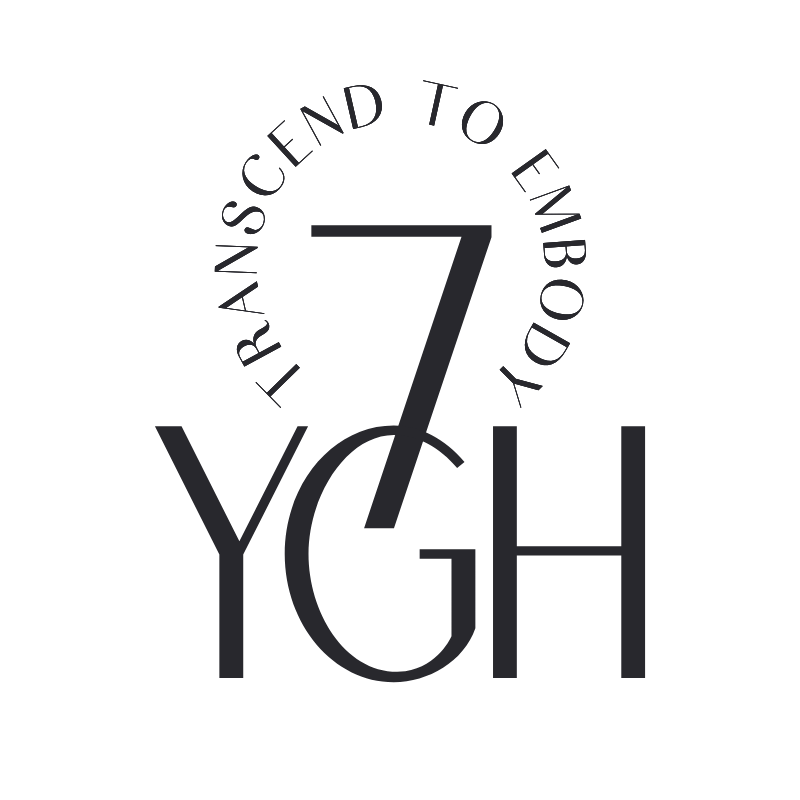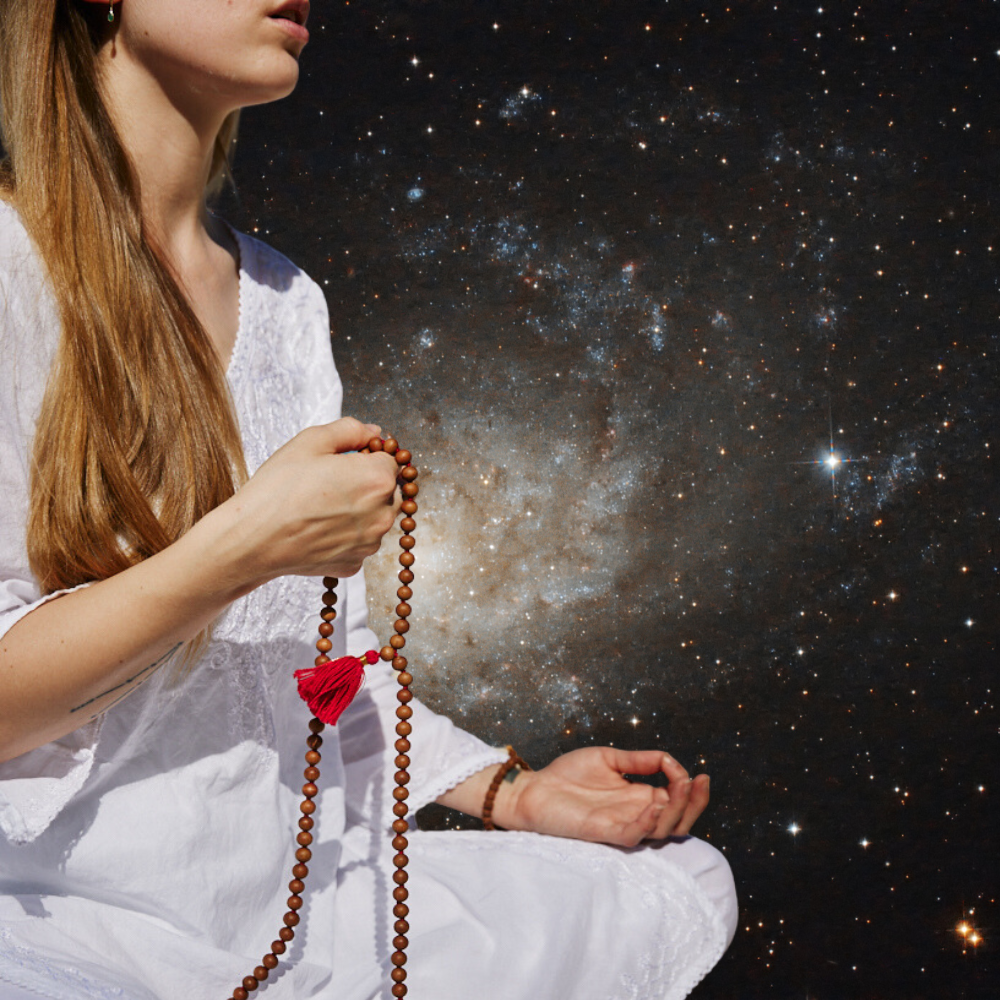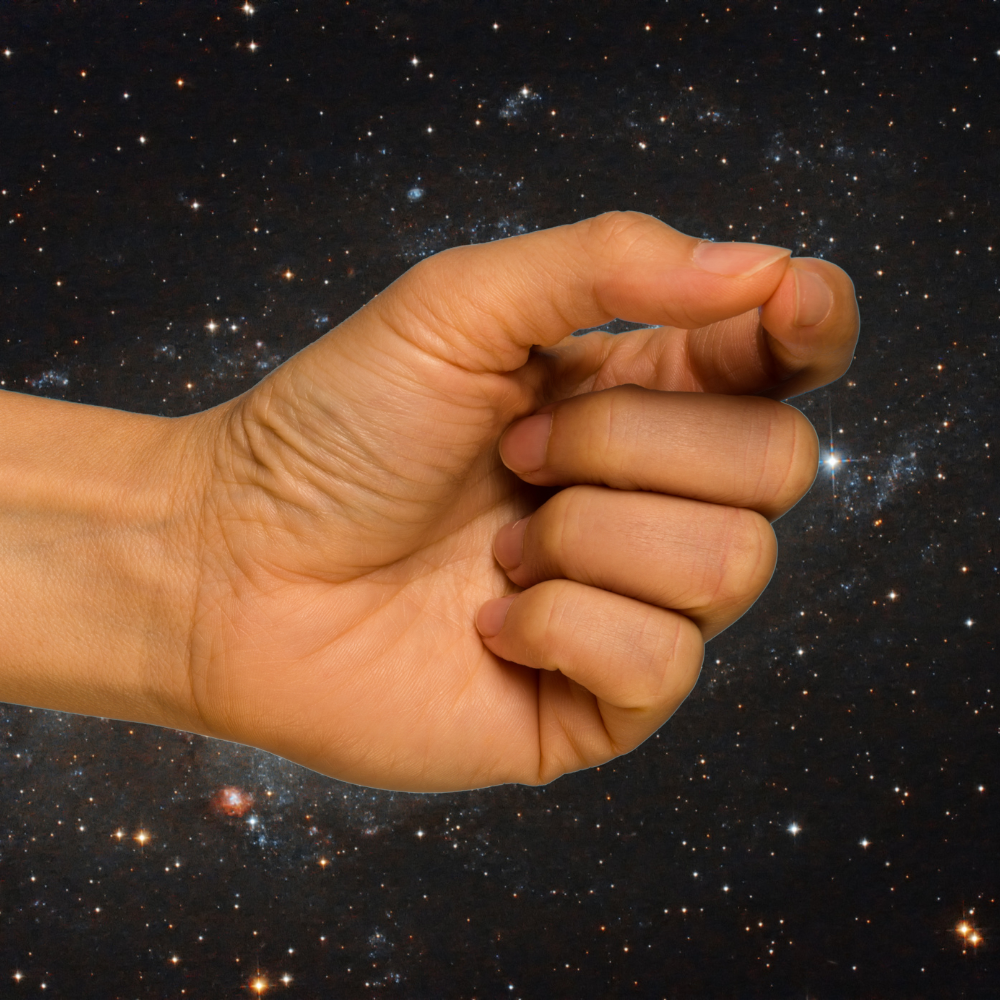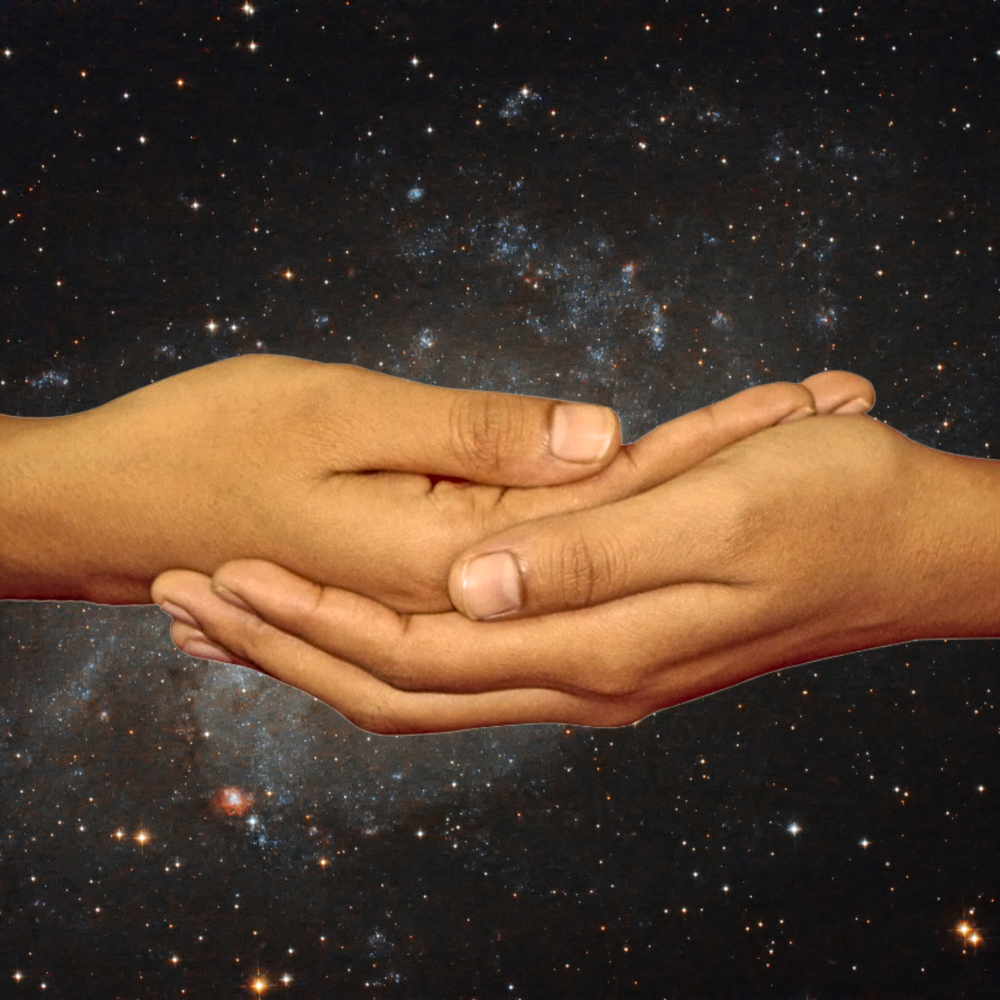7 Meditation Mudras: Guide to Hand Gestures for Focus, Clarity, Energy
Can’t sleep because questions about life’s decisions are keeping you up at night? Need clarity but can’t access your intuition? Feeling like you’re lacking enthusiasm and your meditation is plateauing? Or perhaps you’re low-energy and looking for a pick-me-up that doesn’t involve caffeine and substance dependence?
Mudras are gestures that direct the flow of energy and promote physical health, physio-emotional balance, and spiritual awakening. Hasta (hand) mudras are what most of us think of when we hear the word ‘mudra’; these gestures of (specifically) the hands have been used for thousands of years as an aid for yoga and meditation. Some refer to these types of mudras as “yoga for the hands”. Even though these hand gestures are often used alongside meditative asanas (like the easy cross-legged pose) to boost energy levels and improve focus and clarity, they can also be used in more physically-demanding asanas (like sitting forward bend, pigeon pose, and even Warrior 1 and 2) and as a stand-alone practice (as we are going about our day, standing or sitting) for cultivating different states of mind and consciousness.
In Sanskrit, the word mudra is most often translated as seal, mark, or gesture. The use of the word seal is interesting because it indicates both keeping something in and preventing anything from outside from interference. The reason I mention this is because on a subtle level, a mudra does just that: it not only directs the energy that is already inside us in a specific way, it also blocks any external input from interfering with our manipulation of that inner life force.
Do Mudras Work? Can Hand Gestures Really Increase Energy, Improve Focus, and Center the Mind?
Do hasta mudras really work? In a world where people can easily use spirituality (and spiritual practices) to scam those most in need, it’s good to question and retain a healthy level of skepticism. The sphere of yoga encourages such mental divergences. Some of us may find it hard to believe the idea that placing hands in certain gestural positions will have an effect on our internal energy, or that we are capable of manipulating our own energy using our body parts. For those of us who feel this way, I’d like to bring up the example of any physical practice and ask you about the effects on your energy that you observe post-practice. Moving the body (whether by running, lifting weights, doing push-ups, or taking a yoga class) produces effects; if the movement is masterful, those effects are regenerative (that is, you feel energized versus depleted). In any case, like most practices in yoga, incorporating or experimenting with hasta mudras doesn’t require a leap of faith; if you are willing to suspend disbelief and experiment with the use of mudras, you will experience the very real effects and benefits of this ancient practice for yourself.
7 Hasta Mudras (Hand Gestures) for Focus and Energy
Below, we’ve gathered 7 mudras or hand gestures for your perusal. While countless mudras exist, we’ve chosen these 3 for their ability to cultivate a state of mind that is conducive to the practice of meditation… or to a meditative mindset. Try these mudras either during meditation or any time you need to generate focus, clarity, and energy (for example, before diving deep into a detail-oriented task or as an antidote to the midday slump at work).
These hasta mudras and the details of their practice and effects have been gathered from the experience of many yogis as well as two written sources, which are highly recommended for further research into the fascinating science of both mudras and yoga in general: A Systematic Course in the Ancient Tantric Techniques of Yoga and Kriya by Swami Satyananda Saraswati and Mudras for Healing and Transformation by Joseph Le Page and Lilian Aboim.
A general note on how and when to practice hasta mudras: most hasta mudras are best practiced during meditation. If you don’t have a meditation practice, I invite you to use these hasta mudras while sitting in a comfortable cross-legged position with the spine erect. If a cross-legged position isn’t comfortable, you may also sit on your heels or on the edge of a chair. The idea is that the spine is as straight as possible (without excessive force). The position of the body overall is an extension of the posturing of the hands; an erect spine facilitates a stronger current or flow of energy from the hands to the brain. You can make this practice more traditional by trying to focus the mind with a mantra or the repetition of a certain phrase or the visualization of a specific image. There’s also a lot of benefit to simply sitting and being with the thoughts, observing your mind. Finally, if you are able to at least give 5 minutes to this practice of sitting while using a hasta mudra, that would be ideal.
Mudra #1: Jnana Mudra — The Psychic Gesture of Knowledge for Awakening Clear Seeing
What: Jnana means ‘knowledge’ in Sanskrit. The type of knowledge indicated by this word is not empirical or based in the material realm. It is that and more; it is a higher knowledge, the knowledge of totality. It is the type of knowledge that encompasses and exists in the empirical and the material while remaining inseparable from the totality of reality.
How: Fold the index finger so that the tips touch either the inside root or the tips of the corresponding thumbs. Relax the pinky, ring, and middle fingers. Place the hands on top of your knees or thighs with the palms facing downwards.
When: Use this mudra to find clarity. I find the Jnana Mudra especially effective for solving quandaries, situations where I don’t know what to do or what to say. You can also practice this mudra when you need to activate your intuition and ground it in the body, especially the lower energetic centers (the solar plexus, the sacral, and the root). If you’re feeling lost in the cosmos, lacking creativity, uninspired, and small or insecure, this mudra can help. Having the palms facing downwards moves the breath to the belly region; try it out!
Why: The thumb represents the Universal Force, the Supreme Consciousness, God, or whatever word you’d like to use for that being or energy that is at once greater than us and the very essence of us. The index finger represents the individual ego, the small I that identifies with this body, mind, and circumstances. In this gesture, the ego is bowing to the world; it is dissolving, disintegrating, and merging into the fabric of Reality.
Mudra #2: Chin Mudra — The Psychic Gesture of Consciousness for Cultivating Surrender to the Divine
What: Chin means ‘consciousness’ in Sanskrit. This is a traditional hasta mudra and most are familiar with it on some level; many yogis are pictured with their hands in this position while meditating.
How: Fold the index finger so that the tips touch either the inside root or the tips of the corresponding thumbs. Relax the pinky, ring, and middle fingers. This hand gesture is very similar to Jnana Mudra; the difference rests in the arrangement of the hands on the knees or thighs. Place the hands on top of your knees or thighs with the palms facing upwards.
When: Use this mudra when you need to see the bigger picture. I especially like to use this mudra when I feel like I’m fixating, spiraling in loops of anxiety, lost, disconnected from reality, and unable to see past my nose (metaphorically). Practice this mudra when you need to open the heart. This mudra activates your intuition and brings it into the heart and throat centers, the places where you feel, connect with others, and express yourself. If you’re experiencing blockages in expression, feeling connected to the big picture, and emoting (and translating that emotion to others), this mudra can help. Having the palms up leads to an expansion in the chest; try it out!
Why: Chin mudra has the same symbolic meaning as Jnana Mudra.
Mudra #3: Chinmaya Mudra — The Gesture of Manifested Consciousness
What: Chinmaya means ‘manifested consciousness’ in Sanskrit; chin refers to consciousness, and Maya refers to the material world. As the name reveals, this mudra is used for balancing the first energetic center of the body—the root, the place where consciousness becomes manifest.
How: Curl all five fingers into a loose fist. Allow the tip of the pointer finger to touch the tip of the thumb (or to curl inwards and touch the inner root of the thumb). Rest the hands palm up or down on your thighs or knees.
When: Practice this mudra when you want to deanimate the mind and feel secure in your body. This mudra works predominately on the first energetic center, the root, which is instinctual and critical for survival. By bringing balance to this energy in our bodies, we allow for higher emotions—like trust and love—to manifest and pervade our daily lives. As such, this mudra is great to practice when you wish to make the energies cultivated during meditation more instinctual outside of meditation.
Why: This mudra symbolizes yoga, which is actually the process that leads to the realization that the individual (the four curled fingers) is not only in unity but identical to the universal consciousness that pervades all (the thumb).
Mudra #4: Prajna Prana Kriya Mudra — The Gesture of Purifying Wisdom For Stabilizing Body and Breath
What: Prajna is used to refer to the state of wisdom that is beyond that knowledge that is obtained by reason or intelligence. Prana is the vital energy that flows through all things. The word kriya is interesting; while it literally means action, deed, or effort, in many yogic texts it is specifically used to refer to an action that cleanses or purifies the physical body. Therefore, this mudra can be inferred to be a hand gesture that concentrates the cleansing energy and intuitive wisdom in the physical body.
How: Press the tips of the index fingers into the lowest section of the thumbs. Keep the other three fingers long without using excessive force. Rest the palms facing up on the knees or thighs.
When: Practice this mudra for a somatic meditation, or a meditation that uses the body and breath to process knowledge (and experiences) stored in the higher planes of your consciousness. If you feel like you have a lot swimming underneath the surface but can’t quite access it, this mudra helps you ground the knowledge of your lived experience in the body safely.
Why: Placing the index finger at the base of the thumb requires effort on the physical plane, which has an almost automatic grounding effect on the body and breath. The symbolic meaning of this mudra is similar to the Jnana and Chin Mudras; the thumb represents the Universal Consciousness, as well as the element of fire, while the index finger represents the Personal Ego, as well as the element of air.
Mudra #5: Bhairava Mudra — The Gesture of Shiva’s Fearsome Aspect For Experiencing Unity
What: Shiva is a deity worshipped by Hindus. He is the destructive and transformative aspect of reality; his name is often synonymous with Consciousness or Reality itself. Bhairava is a particularly destructive form of Shiva associated with annihilation. What does he annihilate? Bhairava originates from the root word bhiru, which means fear or fearsome. Therefore, one interpretation is that Bhairava protects devotees from fearsome enemies (like lust, anger, greed); another interpretation is that he is that which is beyond fear; yet another interpretation is that he is that which destroys fear.
How: Place the right palm on top of the left. Keep both hands palms facing up on the lap.
When: Practice this mudra to bring balance or to maintain balance. This is a holistic approach to meditation that doesn’t prize one energetic center over another and whose only goal is to create a pervading sense of oneness and completeness throughout the whole physical body. According to Mudras for Healing and Transformation by Joseph LePage, this mudra balances all 7 main chakras and all 5 types of Prana or life energy. This makes sense physically, as the palms, joined, on the lap create a closed energetic circuit that flows from the bottom of the spine to the crown before reversing.
Why: Fear is the basis of separation. When we fear, we automatically start to see others and the world as separate from ourselves. By invoking the aspect of Shiva that is capable of annihilating fear and/or protect us from the manifestations of fear (greed, lust, anger are all rooted in the emotion of fear; of lack), we also invoke the opposite of the aspect: unity and complete balance.
Mudra #6: Padma Mudra — The Gesture of the Lotus For Balancing the Fourth Chakra
What: Padma means lotus. The lotus is a symbol that pervades Hindu, Buddhist, and other yogic belief systems, well-known for its associations with purity and longevity. Despite the murky surroundings from which it springs, the lotus remains absolutely pristine once it blooms—offering an apt allegory for what the soul must do when arising from the (seemingly) dirty, turbid waters of existing in the world. Also, the seeds of the lotus (under the right conditions) can remain viable for many years; the oldest recorded lotus germination (recovered in China) was from seeds that were 1,300 years old!
How: Place the hands in prayer position in front of the heart. Keeping the base of the palms, the pinkies, and the thumbs together, allow the middle three fingers to fall apart—like an unfolding lotus. Relax the shoulders; it is best to keep the hands at or near the heart, but you can also place them on the lap.
When: Practice this mudra when you feel blockages in the heart. This is one of my favorite mudras to practice during both meditation and asanas (I especially like it in King Pigeon and Monkey poses). I enjoy using the mudra when I notice myself being particularly judgmental, close-minded, and stand-offish. This is my go-to mudra for cultivating compassion and empathy. This mudra balances the fourth energetic center, the anahata or heart chakra, which is well-known as the bridge between the lower 3 and higher 3 chakras, representing the material and the spiritual worlds, respectively. For this reason, this mudra is excellent for balancing the higher mind with the lower mind.
Why: When asked to point to yourself, you will most likely point to your heart space. It’s easy to see why; in yogic philosophy, this is the throne of the mind, where the mind rests in sleep. This is also the place where we feel connected to others and the world. It’s the bridge between Unity Consciousness and Personal Ego, the energy center that helps us exist as balanced human beings that can sustain spiritual experiences while remaining grounded in physical reality. Placing the sign of the lotus at the heart space symbolically evokes the treatment of the heart—this I-ness—with the purity and meaning of the lotus. This mudra asks us to keep the heart pure and full of love and compassion, even when circumstances in the world beg us to behave differently.
Mudra #7: Brahma Mudra — The Gesture of Creative Energy for Energy and Vitality
What: Brahma is a deity worshipped by Hindus. He is the personification of creation and knowledge. He is said to have created the world.
How: Make the hands into fists, placing the thumbs inside of the hands. Turn the palms upwards and place the knuckles against each other. For best results, rest the hands right above/in the bellybutton region, the location of the solar plexus (your internal battery). If this feels uncomfortable, you may place the hands on your lap.
When: Practice this mudra to bolster your ability for manifestation, to activate your self-expression, and to increase overall vitality. I practice this mudra when I feel like I’m lacking confidence and when my energy reserves are low. This mudra can be extremely helpful in fortifying determination and supporting a healthy ego—the type that knows when and how to exert itself in the world.
Why: The solar plexus is the center that’s responsible for our energy to do action in the world. It’s also the place where the personal ego resides. Bringing balance to this center (as this mudra does), helps you express your ego in a healthy way. There’s a fine line between cockiness and confidence; this mudra manifests that line. As the mudra of the creator God in Hindu belief systems, this mudra represents this ability that all of us have to bring into reality our deepest desires, dreams, and wishes—and to help generate the energy needed to make and sustain the new realities that we create.








